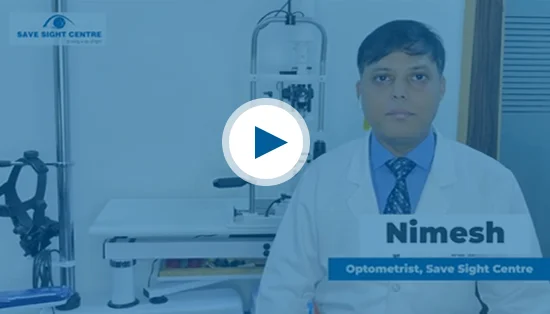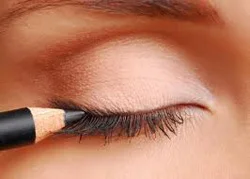Save sight centre is the best Contact Lens clinic In Delhi NCR. We have optometrists here, who are specialist in eye lenses. They can examine and ensure the perfect eye lens for your eyes. This eye care hospital is established 12 years ago. More than 1,30,000 patients has trusted us for their eye sight problems.

Contact lenses are thin, curved discs of various materials placed directly on the eye to correct eyesight or for cosmetic purposes. They are a convenient, attractive, and wider-field-of-view alternative to spectacles.

Contact lenses are used to correct myopia, hyperopia, astigmatism, and presbyopia. They improve vision by refocusing light on the retina. Contact lenses move with the eye, making vision more natural.
Although contact lenses have many advantages, not everyone should wear them. Some people may have diseases or eye structures that make wearing contacts difficult or uncomfortable. To find out if contact lenses are the best option for you, get a suitable fit, and get advice on how to use them, you must speak with an eye care specialist.
These lenses are made of a flexible, water-containing material that provides comfort and allows oxygen to pass through to the cornea. They are available in different wearing schedules, including daily disposable lenses, bi-weekly or monthly replacement lenses, and extended wear lenses that can be worn continuously for several days.

Soft contact lenses are generally suitable for a wide range of individuals. They are a good option for individuals seeking comfortable and convenient vision correction. However, there are certain factors to consider for suitability:
These lenses are made of a rigid material that allows for excellent oxygen transmission to the cornea. They provide crisp vision and are durable, but may require an adaptation period and proper care for comfortable wear.
-lens.webp)
RGP contact lenses may be suitable for certain individuals based on the following factors:
Toric lenses are specifically designed to correct astigmatism, which is a condition where the cornea has an irregular shape. These lenses have different powers in different meridians of the lens to address astigmatism and provide clear vision.

These contact lenses are suitable for individuals with astigmatism who meet the following criteria:
Multifocal lenses are designed to correct presbyopia, a condition that affects near vision as people age. They have different zones for near, intermediate, and distance vision, allowing individuals to see clearly at various distances without the need for reading glasses.

Multifocal contact lenses are suitable for individuals who meet the following criteria:
These lenses are available in both prescription and non-prescription forms. They can enhance or change the natural eye color for cosmetic purposes. Colored lenses can be either opaque, completely altering the eye color, or enhancing lenses that highlight the existing color.

Colored contact lenses are suitable for individuals who meet the following criteria:
Scleral lenses are larger lenses that vault over the entire cornea and rest on the white part of the eye (sclera). They are used for irregular corneas, such as in cases of keratoconus or post-corneal transplant, and provide improved vision and comfort.

Scleral contact lenses are suitable for individuals who meet the following criteria:



Copyright © 2025 | Save Sight Centre | All Rights Reserved.